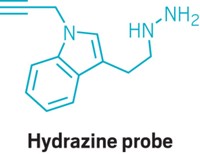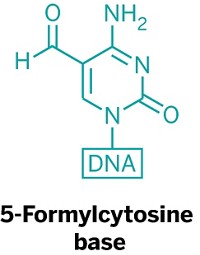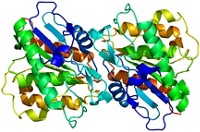Advertisement
Grab your lab coat. Let's get started
Welcome!
Welcome!
Create an account below to get 6 C&EN articles per month, receive newsletters and more - all free.
It seems this is your first time logging in online. Please enter the following information to continue.
As an ACS member you automatically get access to this site. All we need is few more details to create your reading experience.
Not you? Sign in with a different account.
Not you? Sign in with a different account.
ERROR 1
ERROR 1
ERROR 2
ERROR 2
ERROR 2
ERROR 2
ERROR 2
Password and Confirm password must match.
If you have an ACS member number, please enter it here so we can link this account to your membership. (optional)
ERROR 2
ACS values your privacy. By submitting your information, you are gaining access to C&EN and subscribing to our weekly newsletter. We use the information you provide to make your reading experience better, and we will never sell your data to third party members.
Biological Chemistry
Making Light Of Enzymes That Methylate DNA
Epigenetics: A novel assay couples methyltransferase activity to bioluminescence
by Jeffrey M. Perkel
May 13, 2011
Inside a cell's nucleus, methyl groups act like switches: When added to DNA, they turn off gene expression. In some cancer cells, clusters of these methylated bases silence tumor suppressor genes. As a result, some scientists think that inhibitors of enzymes that methylate DNA could treat cancer.
Now researchers report a sensitive one-pot assay to measure these enzymes' activity (Anal. Chem., DOI: 10.1021/ac200816m). They say that the assay could spur development of novel DNA methylation inhibitors.
To study these enzymes, called DNA methyltransferases (DNMTs), biochemists typically add radioactive methyl groups to DNA. The radioactive methyl group comes from tritiated S-adenosyl-L-methionine (AdoMet). Though sensitive, monitoring the addition of radioactive methyl groups has two shortcomings: It requires dealing with radioactivity, and it isn't amenable to high-throughput screens, because of a cumbersome DNA purification step.
To circumvent those problems, Vern Schramm of the Albert Einstein College of Medicine of Yeshiva University, and colleagues developed a bioluminescent method using nonradioactive AdoMet. The DNA methyltransferase converts AdoMet to S-adenosyl-L-homocysteine (AdoHcy). Schramm's method uses three enzymes to convert AdoHcy into adenosine triphosphate (ATP), which the enzyme luciferase then uses to power the production of a luminescent molecule. Luciferase produces a continuous signal with light intensity proportional to the activity of the methyltransferase, and the method measures that intensity. (It builds on 2010 work by Schramm's former postdoc Minkui Luo, now at Memorial Sloan-Kettering Cancer Center, who developed a similar assay to monitor protein methyltransferases.)
Schramm's team tested their assay by measuring the kinetic properties of representative bacterial and human DNA methylation enzymes. When compared to enzyme reaction rates measured by the radioactive method, the luciferase assay produced similar results. But unlike the radioactive assay, the researchers could monitor enzyme activity continuously, rather than having to take samples at distinct time points. They also found the assay could monitor the reactions of very slow, weakly active methylation enzymes.
The scientists then tested two molecules that they thought might inhibit DNMT, but found they had no effect on the enzyme. Schramm plans to use his assay to screen for novel compounds that could lead to anticancer drugs.
Yinsheng Wang of the University of California, Riverside, who developed a DNA methyltransferase assay based on liquid chromatography and mass spectrometry, praises the method's potential to screen possible inhibitors. He also points out the new method's convenience: Many biochemistry labs already have instruments to monitor bioluminescence. Yet Wang notes that the assay's reliance on multiple enzymes means that researchers will have to carefully screen any drug candidates to ensure they actually inhibit the DNMT and not an accessory enzyme.





Join the conversation
Contact the reporter
Submit a Letter to the Editor for publication
Engage with us on Twitter